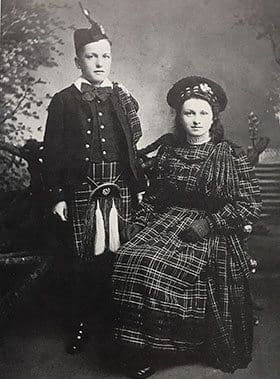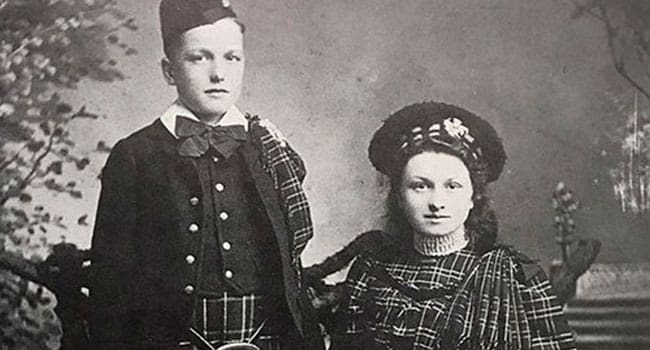 What a gift it is to learn something new about your family roots relatively late in life. Looking back, this process seems more and more infrequent. But not 2017 – it was a banner year for old family intelligence. It was the year we reconnected with our Highland roots.
What a gift it is to learn something new about your family roots relatively late in life. Looking back, this process seems more and more infrequent. But not 2017 – it was a banner year for old family intelligence. It was the year we reconnected with our Highland roots.
Our teachers in this process were Freya and Malcolm Richardson of Bighouse Lodge and Estate, in Melvich, Sutherland, northern Scotland. This mother-and-son team manage a remarkable “Big Hoose” in the heart of the Scottish Highlands.
We stayed with them for a week in September after my sister Wendy successfully bid for the stay at a Vancouver fundraising event. She invited seven guests, including my younger sister, my wife and I, to a wonderful window on contemporary Highland culture. The visit turned out to be an inspired gift in many ways.
What was most fascinating was realizing that there’s a strong strain of Highland indigeneity in our family, courtesy of our paternal grandmother, Charlotte Agnes (Nancy) Graham. ‘Nana’s’ clan had both Highland and Lowland territories, and claims varied lines of descent from Norman, Danish and Flemish forebears. She maintained that she was a Graham of Montrose. The only surviving picture of her childhood features her at age 15 with her brother Jock, posing in elaborate Graham tartan outfits.

Charlotte Agnes Graham and her brother Jock, both clad in the Graham of Montrose tartan, Edinburgh, 1904
Her Scots’ Highland genetics and spirit arguably coloured both my father’s and his children’s education and choice of careers. He, and then my sisters and I, were impressed by her practical mien, her politically liberal sense of fairness, her outstanding capacity for completing tasks, her strikingly balanced emotions, her commitment to all indigenous values associated with place and her love of the natural world.
We were taught to make contributions, “Pressed down. But not overflowing.” Money was valued but not in any way that impaired personal relations. She also had a particular dislike of a certain kind of entitled behaviour and vulgar displays of class.
Over the week we spent at “Big Hoose,” Freya and Malcolm naturally demonstrated Highland values daily.
Freya’s thoughtful attendance to meals that featured local meats and garden produce, and her household management of a staff of Melvich young women were classic examples.
Malcolm’s equal focus on the Halladale River and surrounding lands’ (totally encapsulated by the Bighouse Estate) ecological health, was the outdoor equivalent of his mother’s household management style.
They are outstanding stewards of the estate they manage and accomplished interpreters of contemporary Scottish Highland life.
It was fascinating to see them practise their values in what I realized was a non-governmental model of both Highlands land management and indigenous sporting-tourism. In Sutherland, many estates are managed according to stewardship regimes rooted in traditional Highland land-use and occupancy practices.
Instead of relegating salmon management to government technicians, estate ghillies (traditionally a Highland chief’s attendant) guide fly-fishing and deer-stalking expeditions. They’re also fundamentally involved in game management, because of their detailed knowledge of field and fen. They have a strong incentive to preserve their game stocks because they provide their livelihood.
As part of our Bighouse experience, we also learned about the persistence of the Gallic (“We don’t use the English pronunciation, ‘Gaelic’”) language, which is rooted in the Highlands. It’s evolving to embrace the terms of new technology while retaining its importance for carrying the lessons of history.
Our Bighouse guide Donald told me he wished he could speak Gallic during our tour of the Battle of Culloden (1746) site.
It also would have better conveyed the nuances of the Highland Clearances, the subsequent recruitment of local Highland families by the Hudson’s Bay Co. for work in the Canadian fur trade, and even the return of some Canadian Metis families to farm on the Orkney Islands.
The greatest gift of the trip for me was the realization that my lifelong passion for all aspects of indigeneity, my love of the natural environment, my anchoring liberalism founded on liberty and equality, and my many strong working relationships and friendships with indigenous people are the natural legacy of my grandmother’s Highland heritage.
The Highlanders are the indigenous people of Sutherland, Caithness and Montrose, and via my grandmother Charlotte Agnes Graham, I am one of them. Her quiet and decent steadiness is not forgotten.
Fittingly, her garden of indigenous B.C. plants still blooms on Tolmie Street in Vancouver.
Mike Robinson has been CEO of three Canadian NGOs: the Arctic Institute of North America, the Glenbow Museum and the Bill Reid Gallery. Mike has chaired the national boards of Friends of the Earth, the David Suzuki Foundation, and the Canadian Parks and Wilderness Society. In 2004, he became a Member of the Order of Canada.
The views, opinions and positions expressed by columnists and contributors are the author’s alone. They do not inherently or expressly reflect the views, opinions and/or positions of our publication.

